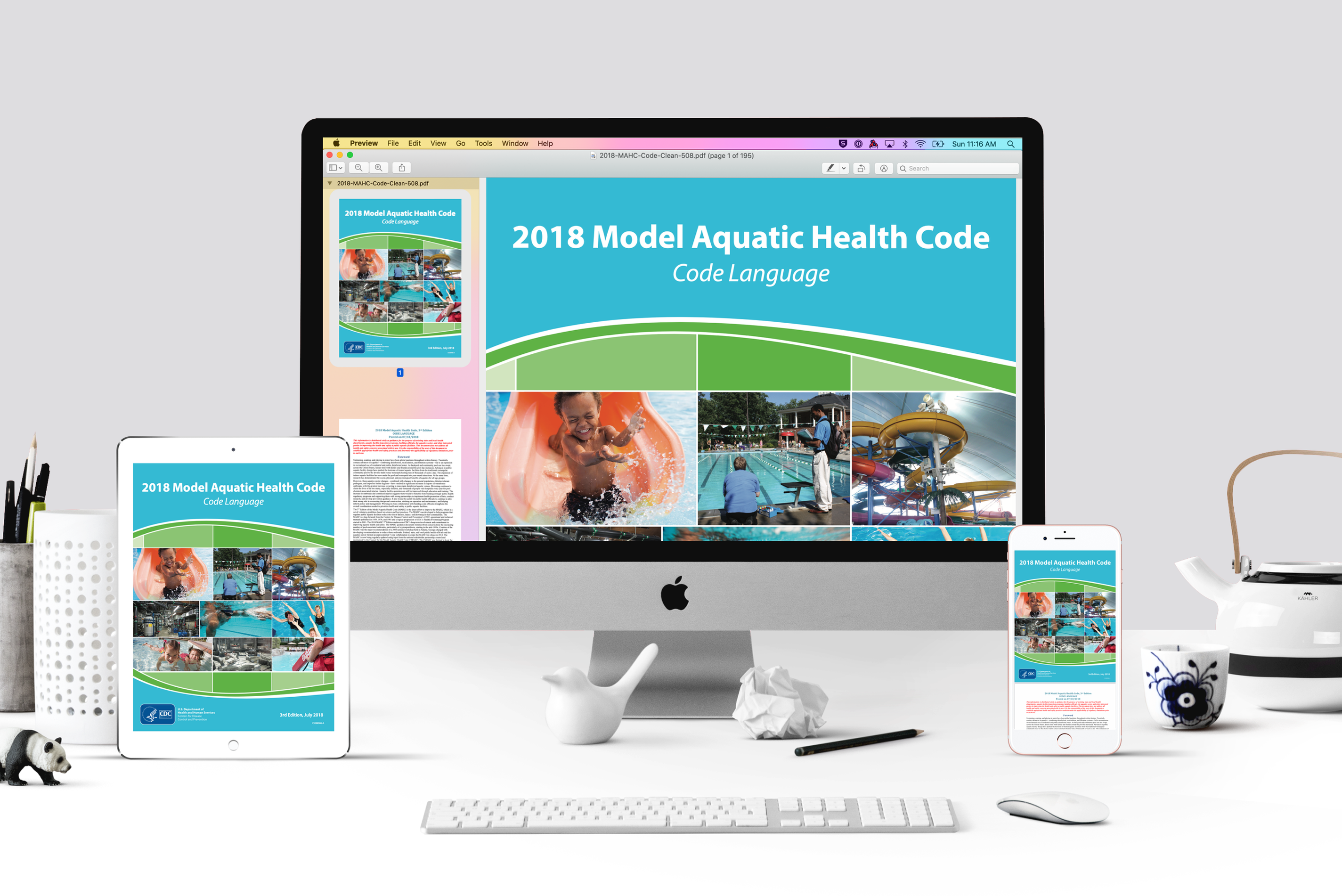Annex
Brown MRW and Barker J. (1999) Unexplored reservoirs of pathogenic bacteria: protozoa and biofilms. Trends in Microbiology, 7, 46-50.
Cato C, Simard S, Charest-Tardif G, Rodriguez M, and Tardif R. (2012) Occurrence and spatial and temporal variations of disinfection by-products in the water and air of two indoor swimming pools. International Journal of Environmental Research and Public Health, 9:2562-2586.
Centers for Disease Control and Prevention. Surveillance for waterborne disease and outbreaks associated with recreational water—United States, 2003-2004. MMWR Surveill Summ. 2006;55(SS-12):513-6.
Centers for Disease Control and Prevention. Prevalence of parasites in fecal material from chlorinated swimming pools — United States, 1999. MMWR Morb Mortal Wkly Rep. 2001;50(20):410–2.
CES Water Quality News. VFD's - how they work and can save you money. Accessed 06/05/2013. http://www.ceswaterqualitynews.org/CESWaterQualityNews/Entries/2008/1/20_VFDs_-_how_they_work_and_can_save_you_money..html.
Durston, Lee. Design, Construction, and Testing of the Commercial Air Barrier. Accessed at http://www.irinfo.org/articles/5_1_2009_durston.pdf.
Effective Lifeguard Rotation– The Redwoods Group: http://www.youtube.com/watch?v=Gm0iGL1hWoM
EMS World Response Time Standards: http://www.emsworld.com/article/10324786/ems-response-time-standards
Gerba CP. Assessment of enteric pathogen shedding by bathers during recreational activity and its impact on water quality. Quant Microbiol (2000); 2:55-68.
Hall-Stoodley, L., Costerton, J.W., and Stoodley, P. (2004). Bacterial biofilm: From the natural environment to infectious diseases. Nature, 2, 95-106.
John D T. (1993) Opportunistically pathogenic free-living amoebae, p. 143–246. In J. P. Kreizer and J. R. Baker (ed.), Parasitic protozoa, vol. 3. AcademicPress, Inc., San Diego, Calif.
Johnston K, Kinziger M. Certified operators: does certification provide significant results in real-world pool and spa chemistry? Int J Aquatic Res Ed. 2007;1(1):18–33.
Jones TF, Mcmillian MB, Scallan E, Frenzen PD, Cronquist AB, Thomas S, Angulo FJ. A population-based estimate of the substantial burden of diarrhoeal disease in the United States; FoodNet, 1996–2003. Epidemiol Infect. 2007;135:293–301.
King CH, Shotts EB, and Porter KG. (1988) Survival of coliforms and bacterial pathogens with protozoa during chlorination. Journal of Applied Environmental Microbiology, 54, 3023-33.
Lewis K. (2001) Riddle of biofilm resistance. Antimicrobial Agents and Chemotherapy, 45. Retrieved from http://www.ncbi.nlm.nih.gov/pmc/articles/PMC90417/?tool=pmcentrez.
Ma P, Visvesvara GS, Martinez AJ, Theodore FH, Daggett PM, and Sawyer TK. (1990) Naegleria and Acanthamoeba infections. Review of Infectious Diseases, 12:490–513.
Miller P. Saving energy at the swimming pool with VFDs. Accessed 06/05/2013. http://www.controlglobal.com/articles/2008/173.html.
Narnes, David, “Swimming Pool Chemical Safety” Accessed on 8/27/14 at: http://www.ehow.com/way_5406877_swimming-pool-chemical-safety.html.
Newsome AL, Baker RL, Miller RD, and Arnold RR. (1985) Interaction between Naegleria fowleri and Legionella pneumophila. Infection and Immunity, 50:449–452.
New South Wales Health Department. Swimming pool microbiological testing frequency factsheet. (2010, February 18) Retrieved from http://health.nsw.au/factsheets/environmental/microbiological_test.html.
Occupational Safety and Health Administration Technical Manual. (1999) Section III. Chapter 7. Legionnaires’ disease. Washington DC. Retrieved from http://www.osha.gov/dts/osta/otm/otm_iii/otm_iii_7.html.
Prevention of Drowning: Visual scanning the attention span in lifeguards: http://www.lifelink.ca/resources/ScanningArticle.pdf.
Pryor M, Springthorpe S, Riffard S, Brooks Y, and Hou Y. (2004) Investigation of opportunistic pathogens in municipal drinking water under different supply and treatment regimes. Water, Science, and Technology, 50, 83-90.
Sehulster L, Chinn RY; CDC; HICPAC. Guidelines for environmental infection control in health-care facilities. Recommendations of CDC and the Healthcare Infection Control Practices Advisory Committee (HICPAC). MMWR Recomm Rep. 2003 Jun 6;52(RR-10):1-42. Available at http://www.cdc.gov/mmwr/PDF/rr/rr5210.pdf.
Shields JM, Arrowood MJ, Hill VR, Beach MJ. The effect of cyanuric acid on the disinfection rate of Cryptosporidium parvum in 20-ppm free chlorine. J Water Health 2009;7(1):109-114.
Shin GA, Sobsey MD. Reduction of Norwalk virus, poliovirus 1, and bacteriopHage MS2 by ozone disinfection of water. Appl Environ Microbiol 2003;69(7):3975-3978.
Stoodley P, Sauer K, Davies DG, and Costerton JW. (2002) Biofilms as complex differentiated communities. Annual Review of Microbiology 56:187–209.
Thomas V, Bouchez T, Nicolas V, Robert S, and Loret JF. (2004) Amoebae in domestic water systems: Resistence to disinfection treatments and implication in Legionella persistence. Journal of Applied Microbiology, 97, 950-63.
Tyndall, R. L., and Dominique, E. L. (1982) Co-cultivation of Legionella pneumophila and free-living amoebae. Journal of Applied Environmental Microbiology, 44:954–959.
Wolyniak, E.A., Hargreaves, B.R., & Jellison, K.L. (2010). Seasonal retention and release of Cryptosporidium parvum by environmental biofilms in the laboratory. Journal of Applied and Environmental Microbiology, 76, 1021-1027.
WHO. 2006. Guidelines for safe recreational water environments. Vol.2. Swimming Pools and Similar Environments. Geneva, World Health Organization, 118 pp.
Zalosh, R. Dust Explosion Fundamentals. Accessed on 8/18/14 at http://www.nfpa.org/~/media/files/proceedings/zalosh_presentation.pdf.

